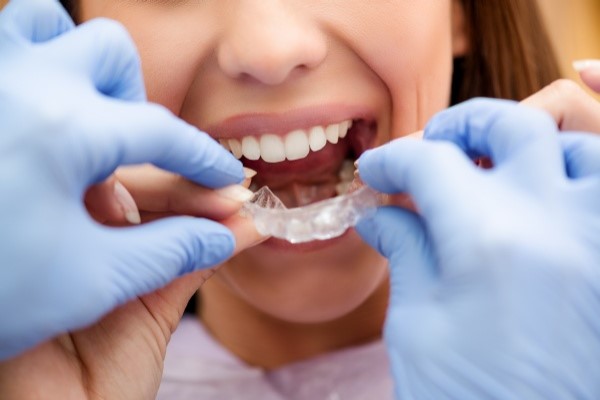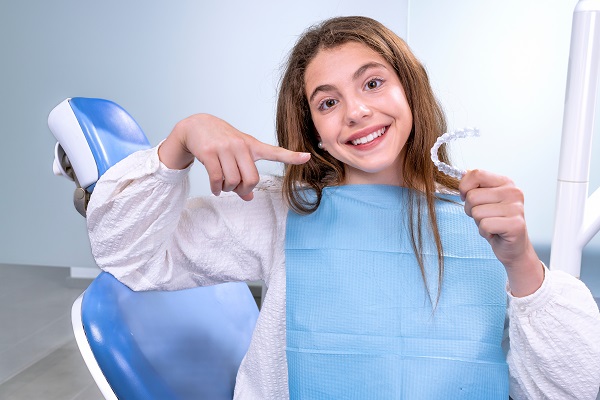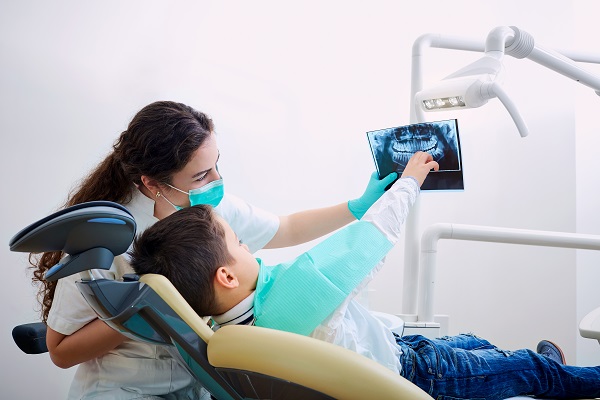What to Expect From Your Orthodontist at Your Invisalign Treatments

Decades ago, anyone who needed teeth straightening from the orthodontist had to undergo years of metal braces and limited food choices. Nowadays, the options are much more varied, with many people choosing Invisalign treatment over conventional braces. Invisalign is a transparent orthodontic device that corrects teeth misalignment with a set of aligner trays. If you are considering Invisalign treatment, this article will tell you what to expect during the treatment process.
Initial appointment
Before starting Invisalign treatment with the orthodontist, the patient will go for an initial appointment, during which photos, X-rays and impressions of the teeth will be taken. Many Invisalign orthodontists use electronic impressions to prevent their patients from having to experience uncomfortable dental molds. The first session is an opportunity for patients to ask any questions they have about the procedure.
Creating the aligners
After evaluating the results obtained from the first dental appointment, the orthodontist will approve the production of the Invisalign aligner trays. While the trays are in the production process, Invisalign will send mock-ups of the aligner trays to the dentist for approval. Usually, the trays should be ready for delivery to the patient in approximately three weeks.
Getting the aligners
After the dentist gets the Invisalign aligners, they will schedule another appointment with the patient. This is when treatment commences. The patient will get their first aligner, and the dentist will help make required adjustments, which may include interproximal reduction, or IPR. The procedure is rarely required, but in such cases, the dentist will file down the teeth by one-tenth of a millimeter. The procedure is not painful and anesthesia is not necessary. After the dentist is pleased with the fit of the first aligner trays, the dentist will discharge the patient with specific instructions on maintenance and oral hygiene.
The treatment process
After receiving their first aligner trays, patients will need to wear them for at least 22 hours a day. This is the rule for every Invisalign tray provided until the end of treatment. The dentist will plan routine checkups to ensure that everything is in order and that the aligners are working correctly. Unlike metal braces, patients will not need to go for braces adjustments or wire tightening. If any problem occurs during treatment, patients should contact their dentist immediately for help. Wearing the trays regularly is important for effective treatment.
The results of treatment
After wearing the last Invisalign aligner trays, patients should have achieved a straighter smile. Another visit to the dentist will be necessary to get retainers (worn only during the night) and to ensure everything looks good. After the treatment, there are typically no special instructions, but if there are, patients must listen carefully and follow the guidelines. Taking care of one's teeth and wearing retainers is important to ensure long-lasting results.
Final note
If you are considering getting Invisalign, contact an experienced Invisalign orthodontist. They will evaluate your dentist and decide on the best way to proceed with treatment.
Request an appointment here: https://www.drsallysong.com or call The Orthodontic Center Of Wayne - Dr. Sally Song at (973) 696-5220 for an appointment in our Wayne office.
Check out what others are saying about our dental services on Yelp: Orthodontist in Wayne, NJ.
Recent Posts
Even though braces are common among teenagers, getting them is a new orthodontic experience for every patient. Teens and their parents tend to have many questions about braces and other orthodontic treatments for teens, when to get braces, and what having braces will be like. Here are some of the most common questions orthodontists hear…
The primary goal of early orthodontic treatment is to prevent and fix bite misalignments. Several causes, including genetics, the premature loss of primary (baby) teeth, and harmful oral habits (like thumb sucking) may lead to such anomalies. Orthodontic abnormalities might be congenital or occur during early childhood. Straight teeth can reduce the incidence of dental…
Invisalign® has changed how willing teenagers –– and everyone else –– are to start teeth straightening treatments. It provides an alternative to traditional metal braces that is virtually impossible to detect. Invisalign® treatments work the same way conventional braces work, the aligner trays exert a force on the patient's teeth pushing their teeth into better…
Oral health is foundational to good overall health. Through the help of an orthodontist and bite correction, difficulties with chewing or speaking can be overcome. The inability to ingest food or clearly articulate impacts both physical and mental health. Bite correction has the potential to change the course of an individual’s health and wellness.Changes in…


